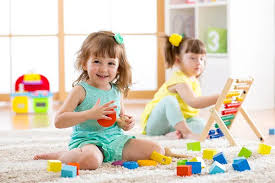

What is Parallel Play and Why It Matters In Early Childhood Education?
Parallel play is a stage of play commonly observed in toddlers, typically between the ages of 2 and 3. During this phase, children play side by side but do not directly interact with each other. They may use similar toys or mimic each other's actions, but they are largely focused on their own activities. This behavior is a normal and important part of a child's development, serving as a bridge between solitary play and more interactive social play.
The significance of parallel play lies in the social and cognitive skills it nurtures. Even though children may not be engaging with one another, they are still learning important social cues by observing their peers. They start to understand concepts like taking turns, sharing space, and mimicking behavior, all of which are foundational for future cooperative play and teamwork. It also allows children to develop empathy and perspective-taking as they witness the reactions of others.
In early childhood education settings, encouraging parallel play helps build comfort and confidence in group environments. teachers and caregivers can set up environments with shared resources and activities that naturally lead to side-by-side play. This structure gently introduces children to social interactions without forcing communication or collaboration before they are developmentally ready.
Ultimately, parallel play is a crucial step in early learning. It supports independence while gradually introducing social awareness. As children grow and become more secure in their surroundings, this stage often evolves into associative and cooperative play, where genuine interaction and collaboration flourish. Understanding and valuing parallel play helps educators and parents nurture each stage of a child’s development with patience and purpose.




 click and follow Indiaherald WhatsApp channel
click and follow Indiaherald WhatsApp channel